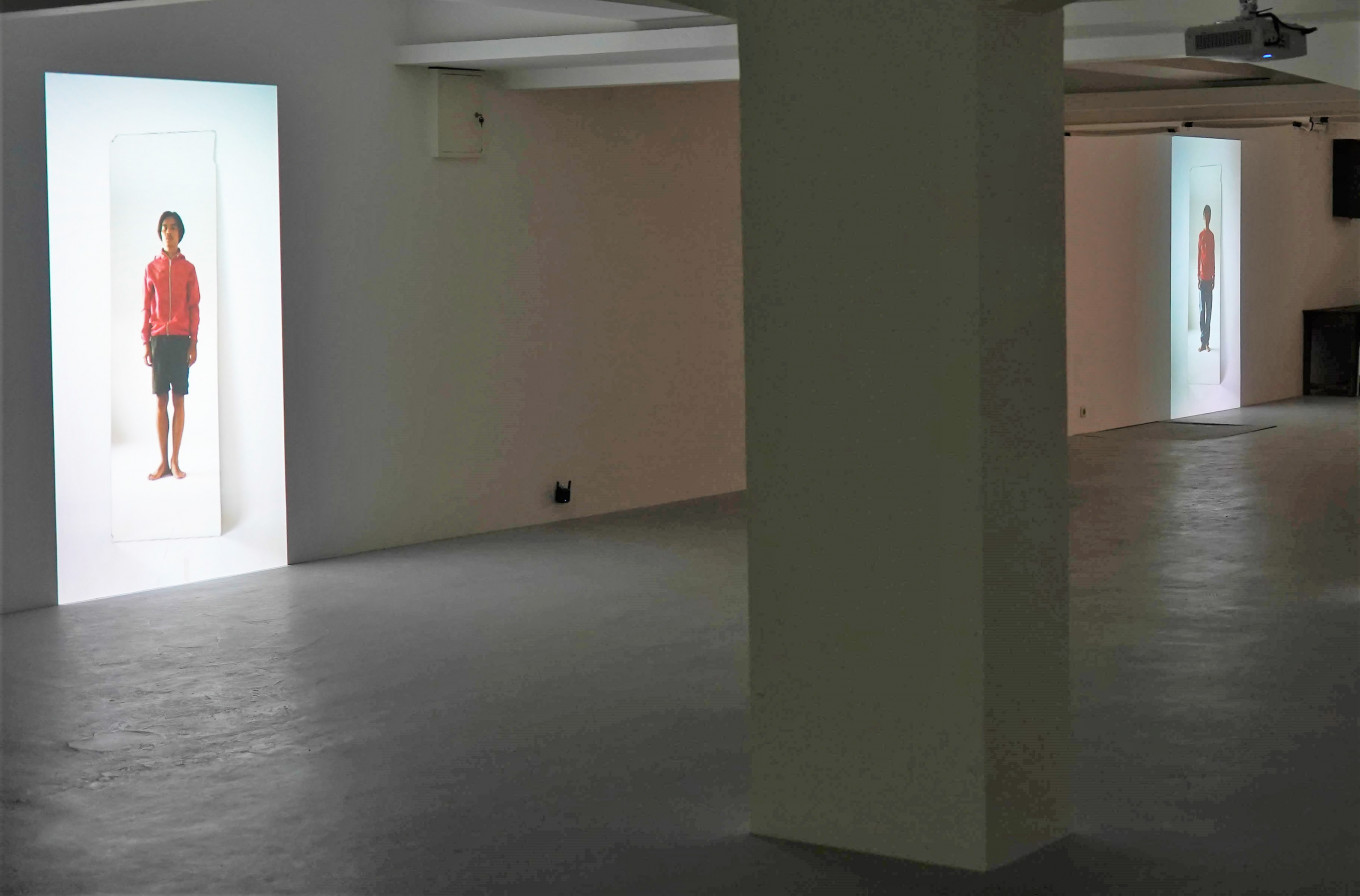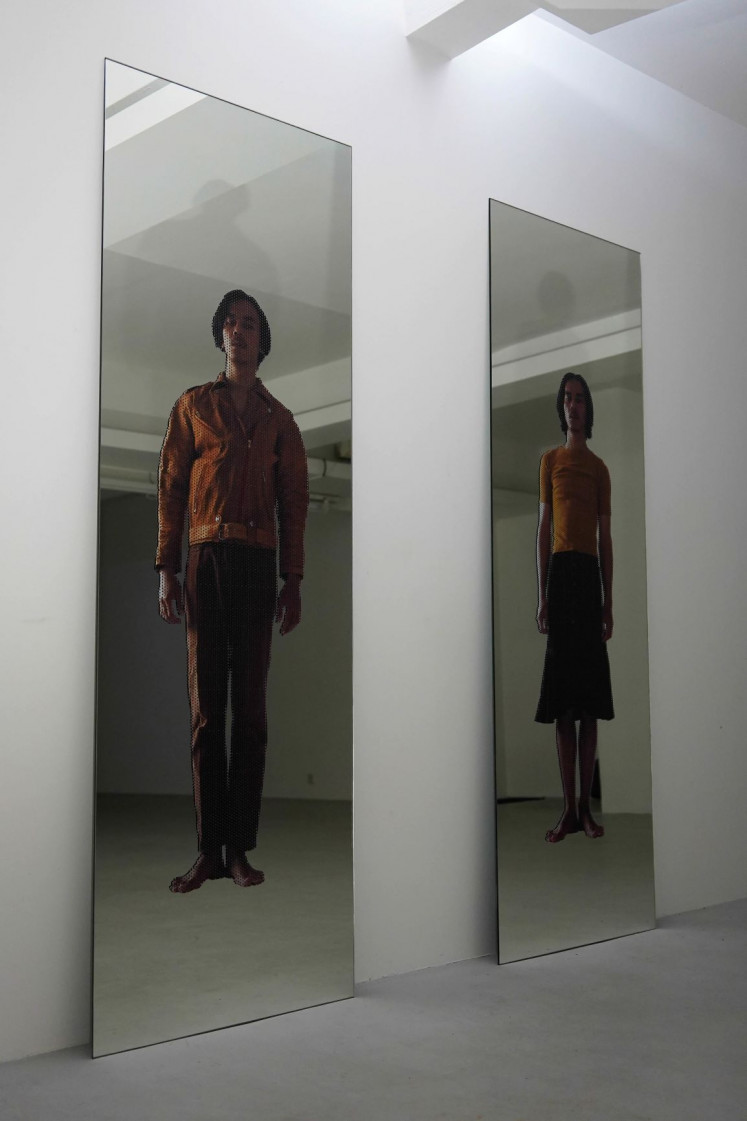Popular Reads
Top Results
Can't find what you're looking for?
View all search resultsPopular Reads
Top Results
Can't find what you're looking for?
View all search results‘Facing the Others’: An exhibition of many layers
Through his exhibition, performance artist Ragil Dwi Putra tackles the issue of self-awareness in a time of ultra-image consciousness.
Change text size
Gift Premium Articles
to Anyone
T
hrough his exhibition, performance artist Ragil Dwi Putra tackles the issue of self-awareness in a time of ultra-image consciousness.
In the exhibition, titled “Facing the Others”, the artist displays 154 photos, each showing him wearing a different outfit, all borrowed from similarly aged individuals in his social circle.
The items of clothing are disparate, ranging from formal wear and office clothing to fashionable getups and many other styles and specificities.
The 27-year-old artist wears them all regardless of personal style or gender. The approach is described as a study of presentation choices made by individuals through the clothes they wear as influenced by social media and basic mobility.
The idea is infused with elements of humor, as some pictures show apparent clashes between the artist's personal style and some of the clothes that he is wearing.
The artist said the exhibition, which run until March 2 at the Rubanah Underground Hub at Wisma Geha in Menteng, Central Jakarta, is meant to offer a glimpse of different perspectives from the people viewing the photos. It is curated by Gesyada Siregar.
“The people who come to view these project presentations will have their own perception when they come across a picture of a man wearing a tight green dress. As do my friends who will have their own perception when they see their dress being worn by another body, that which is mine,” Ragil says.
“These perceptions can be humorous, alien or regular – depending on their personal experiences with these 'other' figures, but at the very least they will get to experience the presence of that 'other'.”
The idea is that a person's clothing not only represents their physical being but also carries with it a history that is shaped through its owner's experiences and perceptions of themselves and their surroundings.
“Clothing that is worn by a friend of mine becomes a different thing when he wears it to work, or when he wears it to a party, or on a holiday on the beach,” Ragil said.
Unsurprisingly, a conceptual performance such as this was not easy to prepare. One of the key challenges seemed simple enough until it actually needed doing.
See me: The exhibition is meant to offer a glimpse of different perspectives from the people viewing the photos. (Courtesy Ragil Dwi Putra/-)
Simply put, it took a lot of time for Ragil to convince his acquaintances and friends to let him borrow their clothes for the performance. Everyone he approached eventually agreed through a process of “negotiation”, he says.
The exhibition acts somewhat like a fork in the road for Ragil, who – like many budding local artists – is torn between conventional work and his artistic pursuits.
He considers the exhibition another process of “flipping a coin” and seeing where things land. So far, he still works as a graphic designer alongside some of his close friends, not unlike most of their peers.
Ragil's interest in performance art has always revolved around the use of mirrors and other reflecting, visual-based objects. He said that currently, he is at a phase in which performance art works best as a medium in finding what suits his method of artistic expression.
Prior to all his studies, Ragil's first brush with art was through helping his uncle, a craftsman, in painting large wooden jars with illustrations, which in Ragil's case were mostly popular cartoon characters from his childhood.
In relating to childhood memories, curator Gesyada said the exhibition also examined the nature of the generation born between 1989 and 2000 – a generation whose actions and methods of self-expression have sometimes been considered “irrational” by previous generations.
Gesyada said the way the generation presented itself showcased a form of “negotiation”, which is a balancing game. For her, the exhibition presents this constant duality.
“That balance comes from the daily mobility that each person has, which is about doing what they are passionate about and also confirming to norms and professions,” she says.
“There is a wanting to follow the norms but also being fashionable – fashionable even when it may not be comfortable to wear, punk-styled but still ethical, traditional but modern, casual but also standing out, classic but current, cheap but expensive, to be professional but effortless,” Gesyada explains. (ste)












